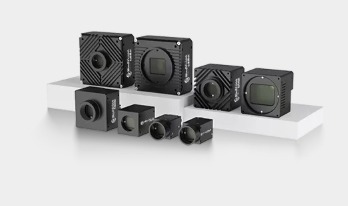Don't wanna be here? Send us removal request.
Text
The Essential Guide to Industrial Cameras: Applications and Benefits

Industrial cameras are specialized imaging devices designed for demanding environments, offering high precision, durability, and advanced functionality. Unlike consumer-grade cameras, they are built to withstand harsh conditions while delivering consistent performance in automation, quality control, and machine vision applications. This guide explores the key features, applications, and advantages of industrial cameras in modern industries.
What Is an Industrial Camera?
An industrial camera is a ruggedized imaging system optimized for industrial processes. These cameras are equipped with high-resolution sensors, robust housings, and advanced processing capabilities to perform tasks such as inspection, measurement, and real-time monitoring.
Key Features of Industrial Cameras
High Resolution & Frame Rates – Industrial cameras capture fine details with resolutions ranging from 2MP to 50MP, ensuring accuracy in inspection tasks.
Durability – Built to endure extreme temperatures, vibrations, and dust, making them ideal for manufacturing floors.
Advanced Connectivity – Support for GigE, USB3, and CoaXPress interfaces ensures seamless integration with automation systems.
Low-Light Performance – Enhanced sensors provide clear imaging even in poorly lit environments.
Real-Time Processing – Onboard processors enable immediate data analysis for quick decision-making.
Applications of Industrial Cameras
1. Automated Quality Control
Industrial cameras are widely used in production lines to detect defects, measure dimensions, and verify assembly accuracy. For example, in automotive manufacturing, they inspect welds, paint quality, and component alignment.
2. Robotics & Machine Vision
Robotic arms equipped with industrial cameras can identify, pick, and place objects with high precision. This is crucial in logistics, electronics assembly, and food processing.
3. Medical & Pharmaceutical Inspection
In pharmaceutical production, industrial cameras ensure pill counting, label verification, and packaging integrity, maintaining compliance with strict regulations.
4. Traffic & Surveillance Systems
Smart traffic management systems use industrial cameras for license plate recognition, speed monitoring, and accident detection, improving road safety.
5. Agricultural Automation
In precision farming, industrial cameras assist in crop monitoring, sorting harvested produce, and guiding autonomous tractors.
Choosing the Right Industrial Camera
Selecting the best industrial camera depends on several factors:
1. Sensor Type
CCD Sensors – Offer high sensitivity and low noise, ideal for low-light conditions.
CMOS Sensors – Provide faster readout speeds and lower power consumption, suitable for high-speed applications.
2. Resolution Requirements
Higher resolution is necessary for detailed inspections, while moderate resolution may suffice for basic object detection.
3. Environmental Conditions
Consider IP-rated enclosures for dust and water resistance, as well as thermal stabilization for extreme temperatures.
4. Integration Compatibility
Ensure the camera supports industry-standard protocols like GenICam for seamless integration with existing systems.
Future Trends in Industrial Cameras
The evolution of industrial cameras is driven by advancements in AI, 3D imaging, and hyperspectral technology:
1. AI-Powered Vision Systems
Deep learning integration allows industrial cameras to recognize complex patterns and adapt to new inspection scenarios without reprogramming.
2. 3D Imaging & Depth Sensing
Time-of-flight (ToF) and stereo vision cameras enhance dimensional analysis for robotics and logistics.
3. Hyperspectral Imaging
Beyond traditional RGB, hyperspectral industrial cameras detect material composition, useful in recycling and food safety.
1 note
·
View note